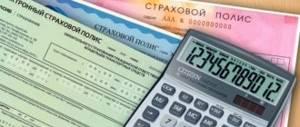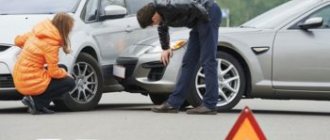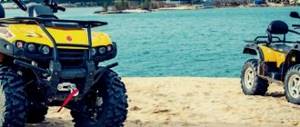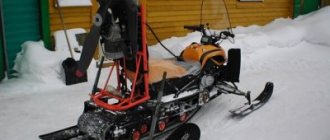In the event of an accident, the compulsory motor liability insurance policy must protect the culprit of the accident from financial losses and guarantee the injured driver compensation for damages. Practice, including judicial practice, shows that this is not so; previously, the compulsory motor liability insurance policy protected only the culprit of the accident, not allowing the victim to receive full compensation for damage, and on March 10, 2021, the Constitutional Court of the Russian Federation issued Resolution No. 6-P, which amends procedure for compensation of losses in case of accidents, now the law on compulsory motor liability insurance is not only not aimed at protecting the interests of the victim in an accident, but protects exclusively the interests of insurance companies!
What changed?
Within the framework of compulsory motor liability insurance, damage sustained in an accident was assessed taking into account the wear of components (with the exception of certain groups). The amount calculated by the insurer usually did not cover all the costs of repairing the car. If, during the assessment, it turned out that the repairs would cost an amount that exceeds the compensation limit under compulsory motor liability insurance, the difference was recovered from the culprit of the accident. The wear and tear of spare parts was also taken into account and the victim was forced to look for used spare parts to repair his car.
In March 2017, the Constitutional Court ruled that when recovering damages from the driver responsible for an accident, the degree of wear and tear of components should not be taken into account. The compensation amount includes the cost of new spare parts and actual expenses incurred. In this case, the insurer compensates for the damage as before, calculating the amount of payment according to the Unified Methodology (should be read “according to the curved RSA reference books”) and also taking into account the degree of wear and tear.
The consequences of this decision of the Constitutional Court are clearly negative for all participants in the accident, except for insurers:
- The burden of compensation for losses falls to a greater extent on the culprit of the accident (whose motor vehicle liability should be protected by a compulsory motor liability insurance policy). The insurance company compensates for damage according to the Unified Methodology of the Central Bank of the Russian Federation, taking into account the wear and tear of components (with a cash payment). In case of in-kind compensation, the compensation limit under MTPL continues to apply. If the car owner injured in an accident is not satisfied, he cannot make financial claims to the insurer, but is forced to contact the person responsible for the accident, without taking into account the wear and tear of components. For example, if a 20-year-old foreign car has a rusty fender that needs to be replaced, the defendant will have to pay the cost of a new body part;
- For injured drivers, obtaining compensation becomes more difficult. You can only demand compensation for damages from the person responsible for the accident through the court. Financial claims must be justified by assessing the damage and calculating the cost of restoration repairs. Even if the court rules in favor of the plaintiff, there is no guarantee that the victim will receive compensation—enforcement proceedings can drag on for years.
How and by whom is it considered?
A legal calculation of depreciation under compulsory motor liability insurance, which has legal force, can only be data obtained from a certified expert agency, with which the insurance company must necessarily enter into an agreement.
At the same time, you need to understand that in the vast majority of cases, the insurer does not turn to the services of such agencies and calculates depreciation independently. This is not illegal if the insurance company does not issue an official opinion on this issue, but only uses an independent calculation to determine the amount of insurance compensation.
Where does the Constitutional Court resolution of March 10, 2017 apply?
Insurance companies began to use this regulation in droves. If a car insured under CASCO is damaged in an accident, then insurers forget about recent savings, show loyalty to their policyholder, and with unprecedented ease send such cars, regardless of their age, to dealerships. Where they are repaired at inflated (compared to regular service stations) prices. And after some time, they bring a claim against the culprit of the accident*, demanding additional payment of the difference between the payment under compulsory motor liability insurance and the actual repair, even if the damage does not exceed the insurance company’s payment limit.
Let's give an example: the damaged Toyota Land Cruiser 200, manufactured in 2014, is insured under CASCO and received damage in the form of a broken front bumper, which needs to be replaced. Repairs at a dealer station will cost approximately 45 thousand rubles. The cost of the bumper at the dealer is about 33 thousand and the replacement and painting work is about 12 thousand. The compensation payment under compulsory motor liability insurance will be approximately 11-12 thousand rubles. Bumper according to the RSA directory - 6 thousand rubles (minus wear - 30-40 percent), 4 thousand rubles remain, replacement and painting work according to the Unified Methodology is approximately 7 thousand rubles. This means the culprit must pay extra. Attention!!! 45-11=34 thousand rubles! And most importantly - everything is according to the law!!!
A reasonable question arises: Why is such insurance needed?
At the moment, we are not able to answer it.
Calculation of physical wear and tear taking into account the age and mileage of the vehicle from the beginning of operation.
It is necessary to assess the physical wear and tear of a passenger car, the actual age of which is 11 years, the actual mileage since the start of operation is 198 thousand km.
Let's determine physical wear and tear using the formula:
Where:
e is the base of natural logarithms, e = 2.72;
Ω is a function that depends on the age and actual mileage of the vehicle since the start of operation.
Let's determine the value of Ω: Ω = 0.07 * Tf + 0.0035 * Lf
Ω=0.07*11+0.0035*198 = 1.463
Then If=100*(1 – e^-1.463) = 76.8%
Assessment of the physical wear and tear of a car using the weighted average age method.
Car 2102, 1974, its cost in new condition is 97,920 rubles. In 1990, the body was replaced, which costs 78,300 rubles. In 2000, a new gearbox was supplied at a cost of 6,000 rubles. It is necessary to determine the amount of physical wear and tear. The standard wear rate per year is 5%. All prices are current.
| date | Age (years) | Cost, rub.) |
Let's determine the weighted average age of the car:
(30*97920+14*78300+4*6000)/(97920+78300+6000) = 22.2 years
Let's determine the amount of physical wear and tear:
22,2*5% = 122,1%
Thus, we see that the car is more than 100% worn out.
Obsolescence assessment
The car was produced in 1993, discontinued in 2000. The production of spare parts was discontinued in 2003. The car was in an accident 2 times and had 1 owner.
We determine the obsolescence of a vehicle:
1. The period from the date of removal of the vehicle from production until the date of assessment is 4 years, therefore, 4 * 2 = 8%
2. Because production of spare parts is discontinued, then 20%
3. For each accident – 5%, therefore, 5*2 = 10%
4. Because The car had one owner, then this factor is not taken into account when determining obsolescence.
Thus, summing up the obtained indicators, we obtain obsolescence, which is equal to 38%.
Determination of accumulated wear.
Let's continue the previous example (the obsolescence of the car is 38%). Let's say the physical depreciation of this vehicle was estimated at 53%. Then we determine the accumulated wear and tear of the car:
In = [1 – (1 – If)*(1 – Iffunction)]
In = [1 – (1 – 0.53)*(1 – 0.38)]*100% = 70.86% — accumulated wear.
Conclusion
In the course of this study, the author came to the following conclusions:
· the cost of vehicles in the general case is a function of many factors, which can be divided into two groups: intra-object (intra-system) and external-object (extra-system);
· wear and tear is an actual loss in the value of a vehicle as a result of a set of factors leading to deterioration or loss of consumer properties of vehicles;
· depending on the reasons causing the depreciation of the vehicle, the following types of wear and tear are distinguished: physical, functional (moral), external (economic);
· when assessing vehicles, two types of wear and tear are used - physical and moral;
· establishing the degree of physical wear and tear is necessary to determine the real residual value and plan the replacement of out-of-service vehicles with new ones;
· obsolescence of a vehicle leads to a change in its value due to a reduction in the cost of socially necessary labor for their production, as well as the creation of new, more productive and advanced vehicles of a similar type;
· There are many methods for assessing the physical wear and tear of vehicles, and the most objective result is obtained when determining wear and tear using several methods.
Topic 7. Calculation of the cost of machinery and equipment using the property approach. Information support for the property approach
Introduction
1. Theoretical foundations for the valuation of machinery and equipment using the property approach
1.1 Machinery and equipment - general concepts and terms………………………………………………………………
1.2 The essence and algorithm for assessing machinery and equipment when choosing a property approach…………………………………………………………………………………………………………………… …………………………………………………………
2. Practical aspects of applying the property approach to the valuation of machinery and equipment (using the example of Enterprise No. 1)____________________________________________________________
2.1 Analysis of the situation and description of the object of assessment………………………………………………………………
2.2 Determination of the value of the valuation object…………………………………………………………………………………………
3. Information support of the property approach when assessing machinery and equipment
Conclusion______________________________________________________________________
List of used literature_______________________________________________
Introduction
In the conditions of formation of market economic relations in Russia, there is an urgent need to assess the value of enterprises based on modern methodological approaches. The enterprise valuation methodology currently used, for example, in the process of privatization of state and municipal enterprises, is based on the adjusted book value of assets and therefore, in most cases, does not meet the requirements of market entities.
In recent years, theoretical and practical activities in enterprise valuation have begun to develop in Russia, based on both domestic and foreign experience. Unfortunately, domestic experience in this area often comes down to the use of only one method - the adjusted book value of assets methodology, while foreign experience turned out to be more versatile. It includes several dozen methods of enterprise valuation, combined into three main approaches: property (cost), income and market (comparative).
The choice of the property approach for consideration in this topic is due to the greatest reliability of the data used in the assessment and the needs of practical assessment of the cost of machinery and equipment in the Russian Federation in a transition economy. The relevance of the chosen topic is also due to the fact that the methods within the property approach are closely related to the use of traditional approaches to the valuation of machinery and equipment, well known to domestic specialists.
As the object of the work, the author considers the property approach to the valuation of machinery and equipment.
The subject of the work is the application of cost approach methods in the process of assessing machinery and equipment using the example of a specific enterprise. In addition, the author focuses on such a point as information support for the appraiser, which is a pressing issue in the modern market.
How to act correctly?
If you are not at fault for the accident. The procedure is standard: after an accident, you need to contact the insurance company, assess the damage, and receive compensation. If the compensation does not cover the actual costs of repairs, evidence of this will be needed (an estimate of the actual damage, documents from the insurance company, etc.). Financial claims must be adequate. If the amount of damage claimed by the plaintiff is greater than the cost of the entire car (if we are talking about an old car, for example), the claim will most likely be denied.
If you are at fault in an accident. It is advisable to record the actual damage to the second car (take a photo at the scene of the accident). If, when compensating for damage by the insurer, the amount of compensation was less than the limit provided for by compulsory motor liability insurance, the insurer is brought in as a co-defendant. The defendant may also offer his own methods of compensation for the damage caused, for example, full-scale repair of the damaged car. This should be used if the financial claims are greatly inflated, and for an old foreign car the plaintiff demands, for example, repairs at a dealership.
carries out assessments of damage caused to cars in road accidents, we employ auto lawyers, we effectively protect the financial and legal interests of car owners.
When and how are depreciation payments made?
Payments under compulsory motor liability insurance, taking into account depreciation, are made some time after experts have calculated depreciation and the final amount of compensation. First, the amount of payment is agreed upon with the car insurer's client, his bank details are specified, after which the amount is fully transferred to the applicant's account (usually up to 1-2 weeks, but not more than 1 month). After the funds are transferred to the account, insurers receive a notification that they have paid the insurance compensation in full.
Related article: Does a driver need to provide an insurance policy to a traffic police officer?
More information about payments under compulsory motor liability insurance and when the insurance company pays monetary compensation can be found here.
What is car wear and tear and how does it affect compulsory motor liability insurance?
Russian legislation does not define the concept of “wear and tear” for calculating the cost of repairing or replacing damaged parts of a car. However, the regulatory act of the Central Bank, which serves as an addition to the main Federal Law No. 40 on compulsory car insurance, contains the legal norm for this concept.
According to the act, the auto citizen operates on the principle of paying compensation to the owner of a car that was involved in an accident; payments are made either by the insurance company or by the culprit of the accident at the expense of his policy.
The insurance company pays not only for repairs and restoration, but also replaces vehicle components. But all the cars in the accident are not 100% new. Previously, insurers calculated the degree of wear and tear on damaged parts at the time of a collision. And the payment was made not at the price of a new spare part, but taking into account its wear and tear.
Since May 2021, amendments have been in force in this area of calculating wear and tear and its impact on compulsory motor liability insurance. This is Federal Law No. 49 “On Amendments to the Federal Law on Compulsory Third Party Liability Insurance of Vehicle Owners.” Which led to the recalculation and payment of compensation without taking into account wear and tear of the vehicle and with it in certain situations.










